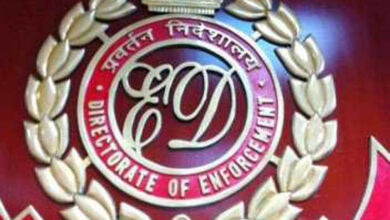
EXPLAINED | Mayawati Opts 14-Year-Old Formula To Woo Brahmins Ahead Of UP Polls 2022
[ad_1]
Lucknow: As the assembly elections in UP approach nearer, political parties have started working on the caste equations. All the parties have started the exercise of trying to win over the Brahmin community, which has a significant influence in politics. BSP supremo Mayawati, while talking about adopting the 2007 formula once again, has announced the commencement of the ‘Brahmin Jodo Abhiyan.’ The Samajwadi Party, BJP, and Congress are all targeting the BSP and trying to establish themselves as the biggest benefactors of Brahmins. For now, the manipulation of castes will intensify further in UP before the assembly elections.
Caste politics have always been seen in Uttar Pradesh. Even in the 2022 assembly elections, the politics seem to be focused on caste equations. The way BSP supremo Mayawati talked about winning over Brahmins during a conversation with a news agency yesterday, it seems like the role of Brahmins will be integral in this time’s assembly elections. Perhaps Mayawati also realises that when she came to power in 2007 with an absolute majority, the support of Brahmins played a major role. The BSP had formed a ‘Bhaichara Committee’ and adopted a social engineering formula which resulted in the Brahmin community not campaigning negatively against the BSP. The party gave the maximum number of tickets (86) to Brahmins. Out of this, 41 became MLAs by winning and BSP came into power with an absolute majority. Now, Mayawati is repeating the same 14-year-old formula and that is why the party has gathered to woo the Brahmin community. From July 23, the ‘Brahmin Jodo Abhiyan’ will begin in Ayodhya.
Six Brahmin Chief Ministers in UP so far
Brahmins have always played an important role in the politics of UP. So far, there have been 6 Brahmin Chief Ministers in the state. Although, all of them happened to be from the Congress. In 2017, Congress had declared Sheila Dikshit as the CM of UP. If we look at the state’s politics, in the last few elections, the winning party has been the one that gave the maximum number of tickets to Brahmins. In 2007, BSP gave maximum tickets to Brahmins, and then they came to power. In 2012, when Samajwadi Party gave tickets, they came to power, and in 2017, when BJP gave maximum tickets to Brahmins, they came to power.
Perhaps this is the reason why the politics in Uttar Pradesh are revolving around the Brahmin vote bank once again. In 2007, BSP had 41 Brahmin MLAs, BJP had three Brahmin MLAs, Samajwadi Party had 11 Brahmin MLAs, and Congress had two Brahmin MLAs. On the other hand, if we talk about 2012, the BSP had 10 Brahmin MLAs, SP had 21, BJP had six, and Congress had three. And if we talk about 2017, there were three Brahmin MLAs of BSP, 46 Brahmin MLAs of BJP, three Brahmin MLAs of SP, and one Brahmin MLA of Congress.
Around 12-13% Brahmin vote bank in UP
Cabinet minister Swami Prasad Maurya has targeted Mayawati’s ‘love for Brahmins’ and made some scathing remarks. He clearly says that Mayawati does not have her own vote bank left. They say that the Brahmin society is the most intellectual and it does not sway by seduction and allurement. Mayawati has lost her support base. Her own vote bank is fed up of her. Now when the situation is bad, Brahmins are being remembered. The Brahmin class is with the BJP; Brahmins cannot be lured by giving them lollipops.
At the same time, political analysts also believe that this is the changing politics of the changing times, where once again the love for Brahmins is rising. In Uttar Pradesh, there is a Brahmin vote bank of around 12% to 13%. It is obvious that as the elections in Uttar Pradesh come closer, caste equations will come into play and this game of accusations and counter-accusations will intensify further.
Source link



